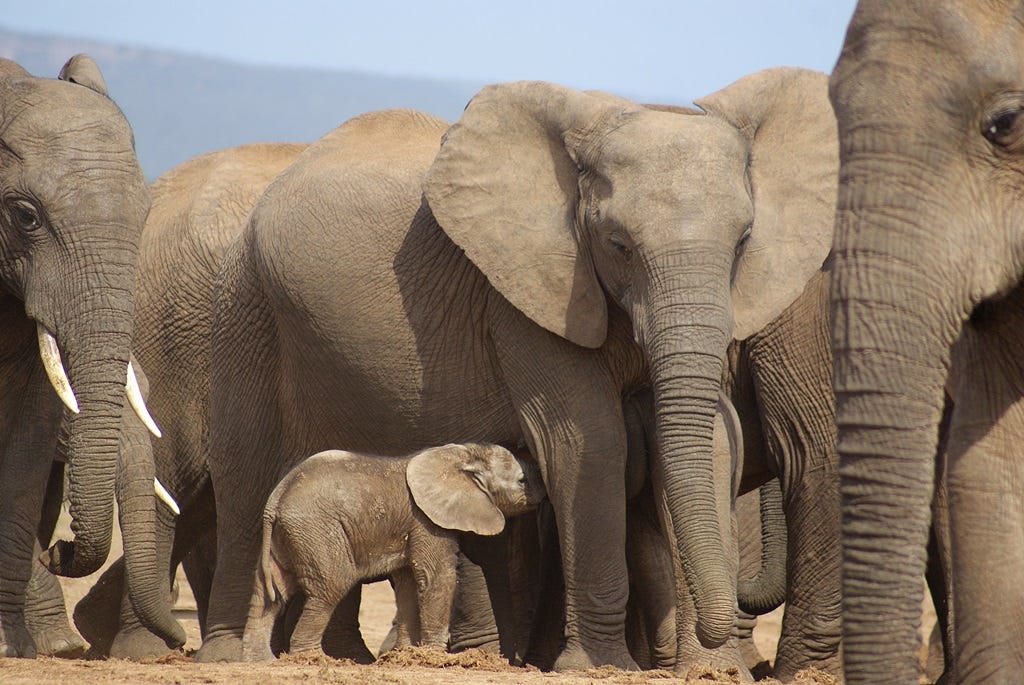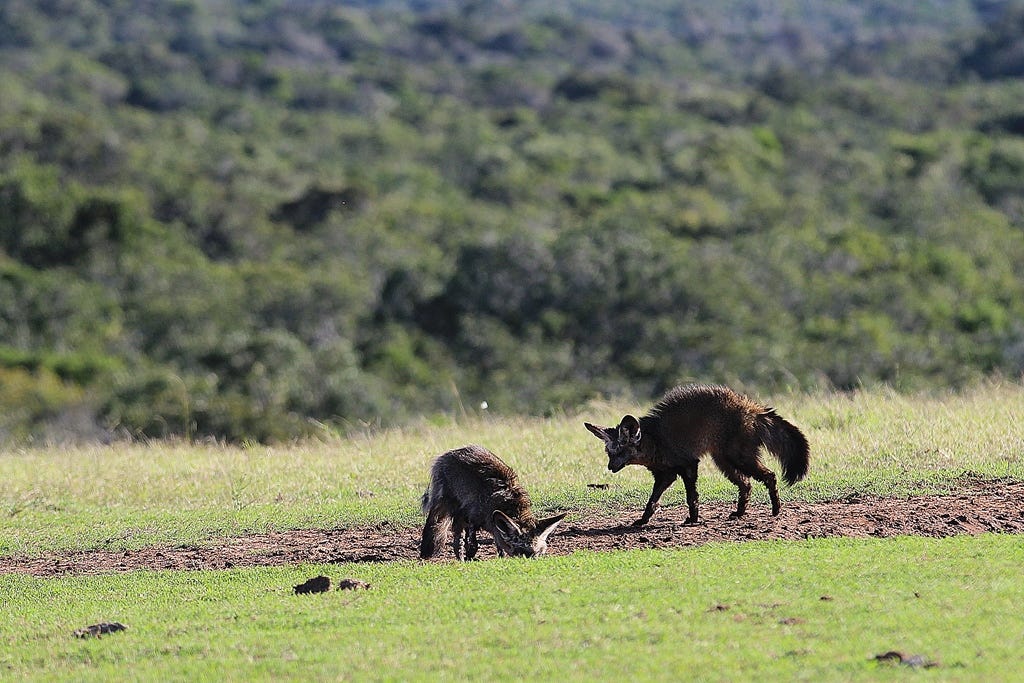
“I’d rather scratch my eyes out”, is how my daughter responded to my invitation to join us on a trip to the Addo Elephant Park. Melodramatic? Yes, but I expected nothing less. She has always made it abundantly clear that she has absolutely no intention of allowing us to subject her to hours of tedium as we scan every bush for the slightest unusual movement.
Ilza (the wife) and I have taken every opportunity to go on game drives ever since we started dating – long before we were married and even longer before our youngest daughter was born. We knew her hyper-rejection would come. It always does. It’s part of a family ritual. She takes pride in rejecting our invitations just as I take pride in always inviting her.
Of course, sometimes I think ‘maybe she’s got a point’? If we want to look at animals, why don’t we go to the zoo? Why don’t we? In the first place, zoos are considered cruel even if the animals are kept only so they can breed and avoid becoming extinct. Secondly, there’s no zoo within a thousand kilometres of where we live, and thirdly we enjoy the idea of seeing wild animals in their natural environment.
The environment in game reserves in South Africa is as close to being natural as it can be under the circumstances. Most of the Kruger National Park, the Kgalagadi Transfrontier Park and a few other reserves have large sections of pristine natural ecosystems, but they have their limitations.
It was obvious when the first reserves were declared that it was essential to put fencing around them. They had to keep stray livestock and trespassers out; and had to keep dangerous predators within the reserve.
Putting up fences served a purpose but they also restricted animals’ free movement. Before the fences many herbivore species regularly migrated long distances to find water and fresh plant life. Carnivores naturally followed their prey.
Restricting migrations means that animals are forced to remain year-round in water-scarce areas. This is particularly true for my favourite reserve - the Addo Elephant Park (AEP) where there is no natural perennial water in the main section. For this reason, park management has provided a number of artificial water-holes more or less evenly spread throughout the park.
These water holes are absolutely vital to ensure the viability of the park’s wildlife. It is also essential for the technical staff to maintain the pumps and pipes that feed the water holes. This is more difficult than it sounds because elephants love to play with pipes and damage equipment so that they need to be repaired often.
The man-made water holes are great for visitors to the park because they attract animals and so improve your chances of seeing game - but it is obvious that they are not natural creations.
Are bigger game reserves better?
In the last few decades the Addo Elephant Park has expanded significantly. It is much larger than the 4,517 hectares it covered when it was created in 1931. This is great because the bigger it is the more animals it can carry and accommodate a richer biodiversity.
The incremental expansion occurred as SANParks (body that manages national game reserves) took over adjoining agricultural lands and other private properties. This means that while some parts of the AEP look like virgin savannah, other parts bear the scars of many decades of farming. Even if these lands are left alone for years, it takes a long time for the natural grasslands and bushveld to reclaim them.
In some parts of the park where original spekboom bushes come right up to the side of the road, you might struggle to make out a buffalo not five metres away. In other sections, you might see zebras from 500 metres as they cross plains that might have been ploughed fields in the last millennium.

A bigger reserve also means you have to build more roads so that visitors can see the animals. The parks have to attract visitors to help finance their conservation efforts and the visitors necessarily drive on roads.
The roads are convenient, but they also detract from the illusion of a wild Eden, especially when they bring a constant stream of vehicles. The roads open the way for a flow of noisy cars, game-viewing vehicles, SUVs, trucks and even buses with their tourist passengers.
This is not a natural environment. It is as close as we can get it while still holding it to its conservation values and tourism appeal. We have to be pragmatic and make some compromises with nature.
If this is not a totally authentic wildlife experience, why do we go to game reserves?
My daughter’s reluctance to visit any game reserve can also be reduced to “if you’ve seen one elephant, you’ve seen them all”.
We know very well what kind of animals we can expect to see. We have been enough times and know it is unlikely that we’ll see an animal species we’ve never seen before.

That said, the last time we went towards the end of May, we spotted two bat-eared foxes. It was the first time we’d seen them in the AEP.
The real joy is not ticking off species on a life-time list of sightings, but rather observing the unexpected antics of the animals that you happen to encounter along the way.
Elephants are intelligent, big and numerous in the AEP so it is not surprising that they provide the most entertainment in the park. Adults seem to take cruel joy in blocking zebras from approaching a water hole, while the young ones flap their ears vigorously as they chase warthog families in all directions.
Young bulls spar with each other in shoving matches that sometimes get a little too robust and scare tourists. An adult male will sometimes bully a calf just to secure the compliance of its mother. Yes, nature can sometimes be cruel.
Other animals can be just as entertaining if you catch them in action. Zebras often push each other around. They bite their opponents’ necks and undersides, they kick viciously, rear up on their hind legs and chase each other through the veld.
Zebra battles are fast moving and run across the road in an instant. It is exciting to watch them fight but it is more difficult to photograph than you would imagine.
Their fights for dominance are riveting, but it is not only the clashes that makes zebras so interesting.
It is heart-warming to observe a young foal feeding from its mother, or a pair of adults resting their heads on each other’s backs.
Predators attract a lot of attention in the Big Five hierarchy. Sometimes people feel they have failed as game viewers if they have not seen a lion. Actually most predators are pretty boring unless they are hunting. Lions and hyenas in Addo seem to spend most of the day sleeping.
So to come to our original question about why bother going to a game reserve when you’ve seen almost all of the animals before. It is because we want to see them doing something special or unusual, something you can talk about for years to come.
Finally, when you are out in the bush and there’s no cellphone reception, you don’t have to worry about anything else. You can relax. Your entire attention is focussed on a baby elephant cavorting in the muddy waters of the Hapoor water hole. The only thing you have to worry about is how that calf is going to get up the bank. The rest of the world becomes irrelevant.
I hope to see you on a Real Safari sometime soon. Thanks for reading and please encourage your friends to read this newsletter and subscribe.






Makes me wish I was on a game drive! Thank you for the wonderful story and pictures!